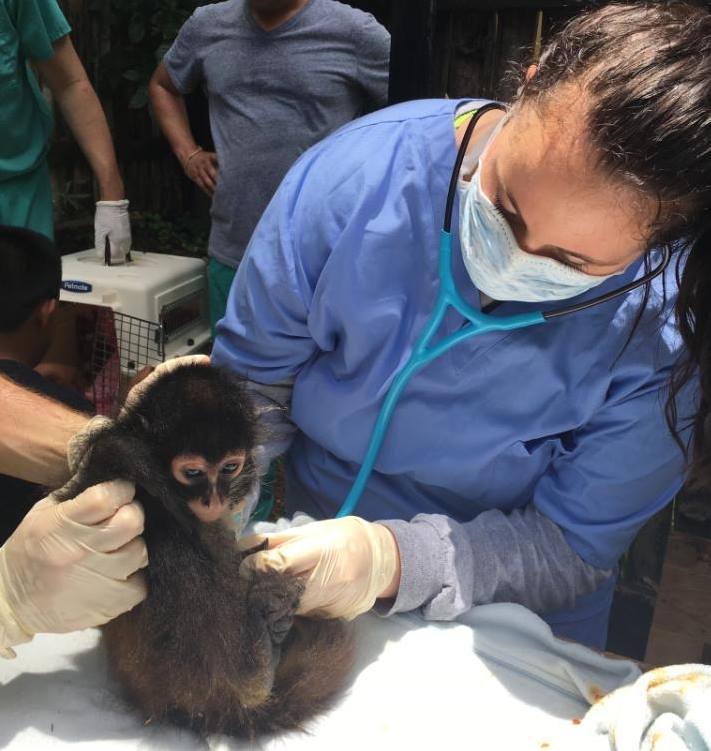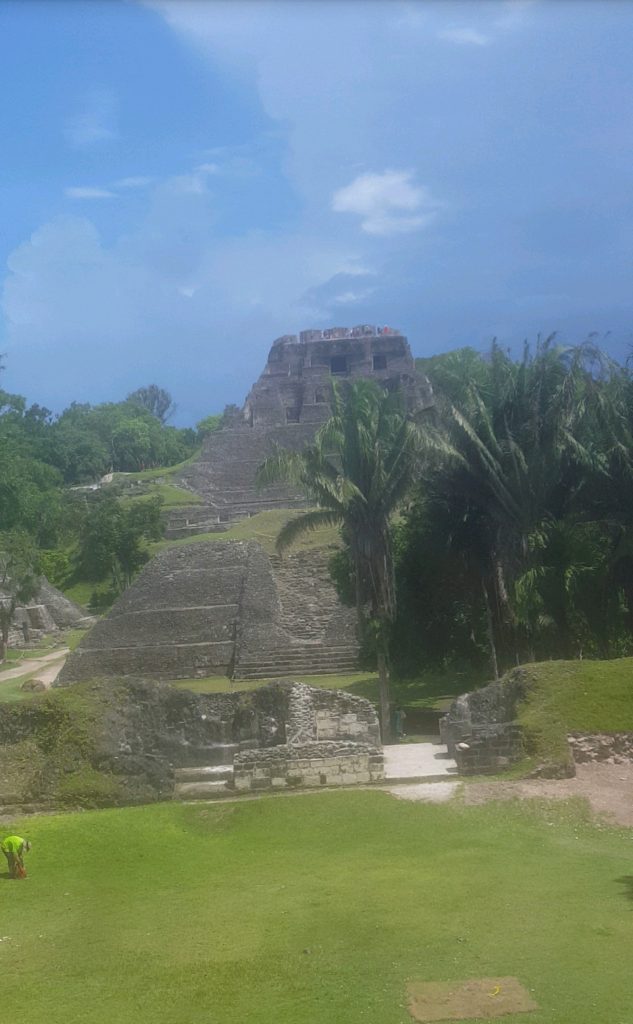I’m really afraid of planes. Like, really, really afraid of planes. There’s just something about bouncing around in a metal cylinder 40,000 feet in the air that gets to me. This summer, I went to Minneapolis for about a month (but that’s a story for another time), and the plane ride was so scary for me that I swore I would never voluntarily ride on a plane again. Then, I got an email about a week-long summer course in Belize, and I promptly decided that I would get over it.
Belize is a small country in Central America, about the size of Massachusetts. Its official language is English, since it was liberated from British rule relatively recently in history. Cornell partners with the Belize Zoo for a class called “International Experiences in Wildlife Health and Conservation.” The course runs twice a year, once in January and once in July/August, and gives a small group of veterinary students the chance to travel to Belize with a team of Cornell veterinarians to assist with different procedures that need to be done on the animals at the Belize Zoo. The Belize Zoo is unique because all of the animals there are native to the country, and they were all “rescued” in some way: some of the animals were kept as pets by people who meant well but obviously weren’t equipped to raise a wild animal in their home, and some of the animals were injured or orphaned in the wild. The zoo serves to not only provide a safe place for these animals, but also to educate both tourists and Belizeans alike about the animals that live in Belize. The zoo’s founder, Sharon Matola, told us a story about an old man who once visited the zoo and teared up as he was leaving. When she asked him what was wrong, he replied that he had lived a long and full life, but this was the first time he had had the opportunity to see the animals of his country. This story, in addition to making me cry (don’t tell anyone), highlighted just how important the Belize Zoo’s mission is.
Throughout the course of the week that I was at the zoo, I learned so much, both from the Cornell veterinarians who came with us and the zookeepers who took care of these animals every day. We got to tour the zoo twice: once during the day, and once at nighttime. This way, we got to see the nocturnal animals as well as the animals that were active during the day. The zookeepers who led the tours were so knowledgeable about all the animals, and it was clear that these people loved their jobs and the animals they took care of. We also got the chance to pet an American crocodile, hang out with peccaries in their enclosure, and get jaguar kisses from Junior Buddy, the zoo’s jaguar mascot (we sat in a cage and he licked us from where he stood on top of the cage…that counts as a kiss to me)!
I watched and sometimes assisted in multiple procedures, including an enucleation surgery on a jaguar with glaucoma, tuberculosis testing on spider monkeys, and multiple dental examinations and tooth extractions on jaguars, jaguarundis, a silver fox, and a kinkajou. My favorite case, however, was Maggie the frigate bird. Maggie was clearly in pain, had lost a significant amount of weight due to inappetence, and was just generally depressed; the zookeepers were upset that Maggie was suffering, and asked us to help her. Upon taking radiographs, we saw that she had severe osteomyelitis (infection of the bone) in several digits on both of her feet. Euthanasia was briefly considered, but the zookeepers and Cornell vets decided to try to amputate the infected digits first. The day after the amputation, Maggie was bright, alert, and clacking her beak like nobody’s business. Some people say that animals don’t have emotions, and I respectfully disagree, because that bird was obviously HAPPY that the source of her pain had been eliminated. Veterinary school is stressful, and it can be easy to forget why you’re here, but witnessing this sad, painful bird transform into a joyful animal reminded me that veterinarians make a tremendous difference in the lives of the animals they treat and the people who love these animals.
I’d like to think I gained not only veterinary knowledge, but also “life knowledge” while in Belize. Physiology class turned out to be very relevant when I became extremely dehydrated; I will never travel without bringing some electrolyte tablets with me ever again (live and learn!). We took a field trip to the city of San Ignacio, where we visited various little shops and restaurants and talked to locals. It was interesting to see how people run businesses and support their families in a society that doesn’t have a Wal-Mart down the street. We also visited (and climbed to the top of!) a Mayan archeological site, where we learned about Belize’s history and culture. It was surreal to stand on the top of a structure that was built almost 1,500 years ago.
I never thought I’d say this, but the plane ride was totally worth it. I am so thankful for the Cornell veterinarians, who taught us a remarkable amount in just a short time, my fellow vet students, who made me laugh every single day, and the Belize Zoo and Tropical Education Center, who accepted us with open arms. Both the veterinary and cultural experiences I had in Belize were absolutely incredible, and I would recommend this class to any Cornell veterinary student, regardless of their career interest.
ABOUT THE AUTHOR:
Rachel Somma is a second-year veterinary student at the Cornell University College of Veterinary Medicine. She is also concurrently pursuing a Master of Public Health degree through the University of Minnesota School of Public Health. Rachel hopes to join the CDC’s Epidemiology Intelligence Service immediately after graduation, and then continue to combat the spread of zoonotic diseases and promote health among humans, animals, and the environment by working as a public health veterinarian for a national or international health organization.


